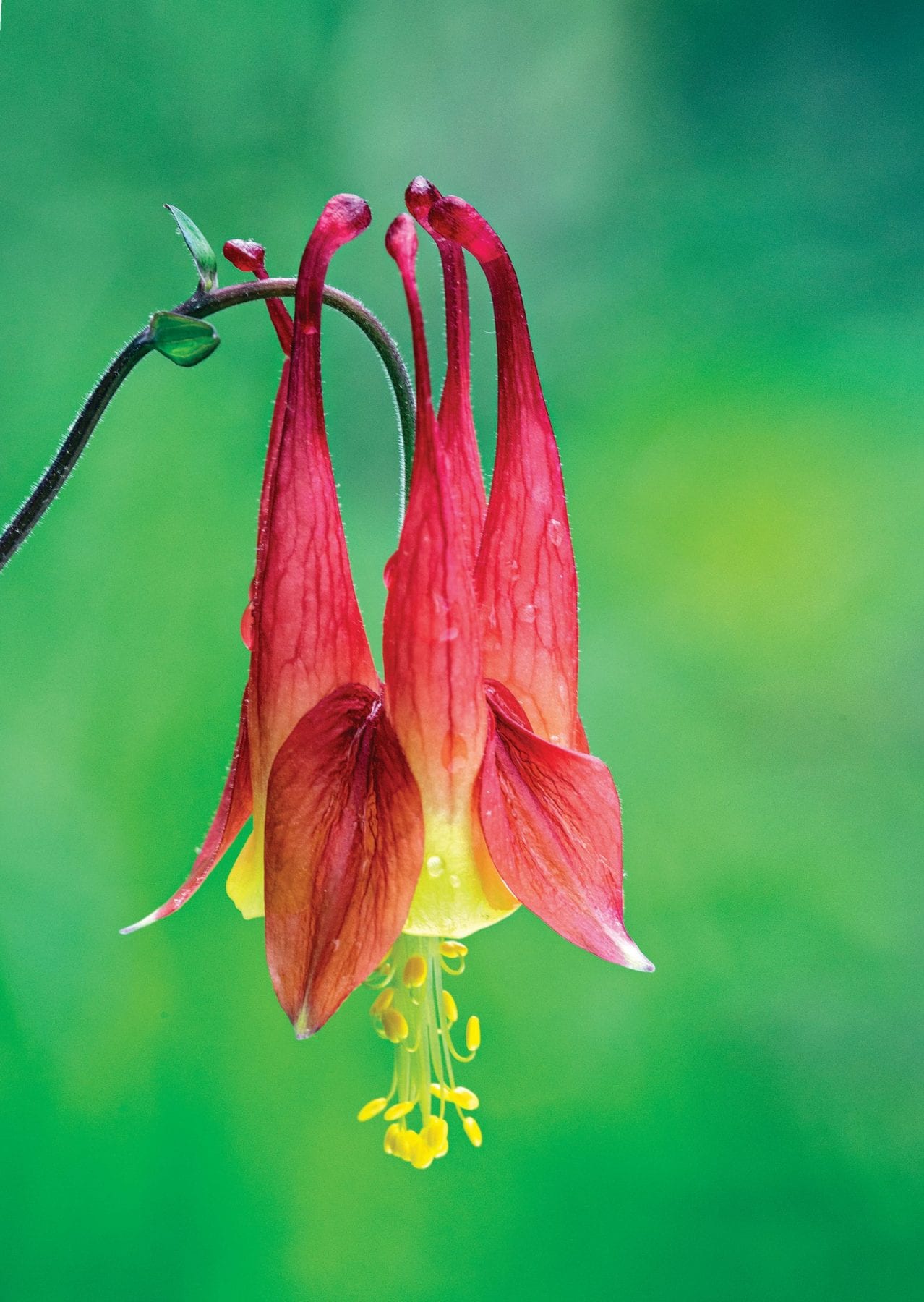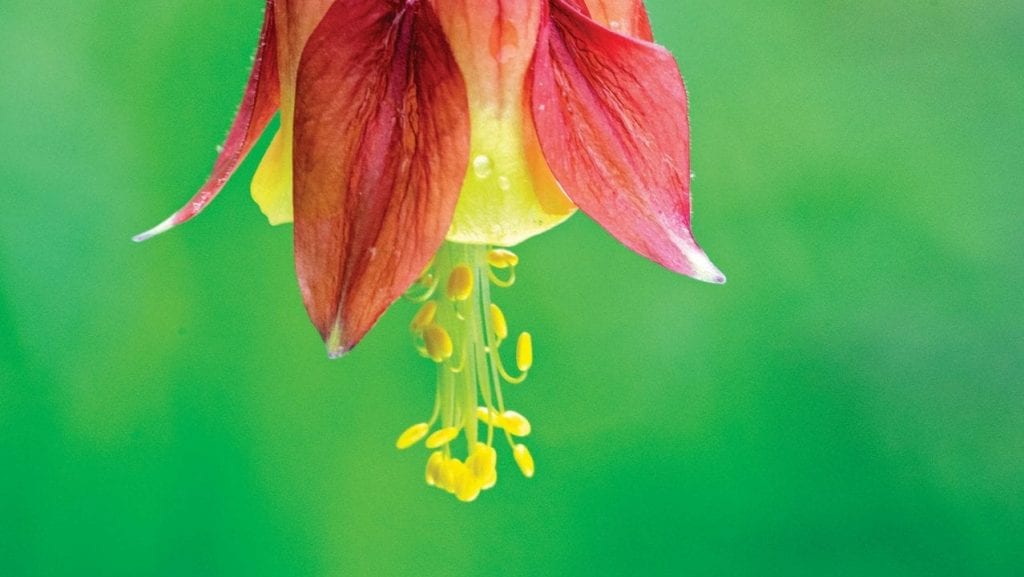“Columbine” by Robin Conover Canon EOS 5D Mark IV, EF 180 mm ƒ3.5 L Macro USM lens, ISO 500, ƒ13 at 1/60 second, Gitzo tripod
I haven’t owned a macro lens since switching to digital cameras about 15 years ago. I’ve always used a telephoto lens with some type of extension tube if I needed more magnification than the lens offered. While this worked pretty well, it was always somewhat awkward, bulky and difficult to get it all set up at the right distance from the subject.
This spring, I wanted to try something different, so I borrowed a true macro lens from a photographer friend of mine, Devi Sanford, to shoot wildflowers.
I spent a few days in the Great Smoky Mountains with the 180 mm macro, photographing showy orchis, yellow trilliums, dwarf crested irises and columbines.
Compared to my other setup, this lens is much smaller, lighter weight and sharper. A true macro allows you to get within inches of your subject as opposed to feet, making it much easier to compose images and capture every detail of very small subjects.
The very narrow depth of field of this lens is both a positive and negative. It allows you to easily blur the background completely but challenges you to find the correct f-stop to keep your subject sharp.
I found this Aquilegia canadensis bloom, commonly known as columbine, while driving along a section of Cherokee Orchard Rad near the Roaring Fork Motor Nature Trail in the Great Smoky Mountains National Park. Columbine is a spring bloom that’s often found in the lower elevations of the Smokies. You can tell the depth of field is almost too narrow as the yellow stamens are not quite as sharp as I would like.
As you probably already know, Gatlinburg is known for being a romantic destination to spend time with your significant other, get engaged or even be married. So, appropriately enough, since this was a solo photography weekend for me, I fell in love with this lens.




